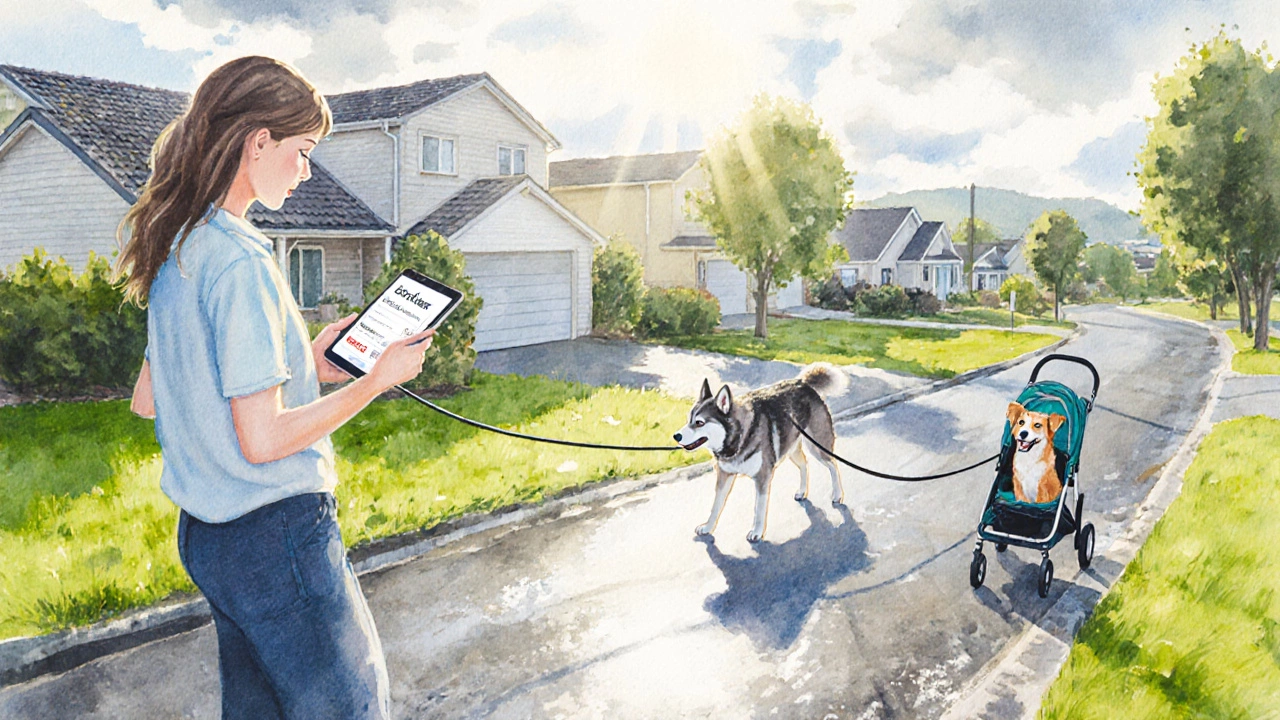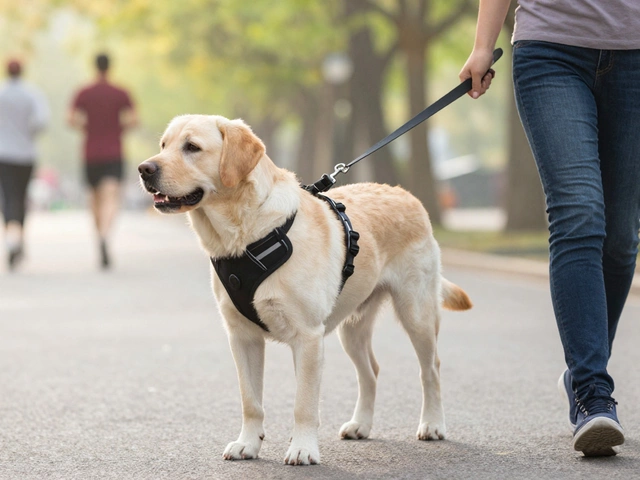
Pet Sitting Earnings Calculator
Calculate Your Net Earnings
Estimated Earnings
If you’re looking to turn walks with dogs into real income, you’re not alone. Thousands of people in Auckland, Sydney, and beyond are signing up for pet sitting apps to earn cash on their own schedule. But not all apps are made equal. Some pay better. Some treat walkers like robots. Others give you freedom - and actually listen when you say you don’t want to walk a 90-pound husky at 7 a.m. on a rainy Tuesday.
The best pet sitting app to work for isn’t the one with the flashiest logo. It’s the one that matches your lifestyle, pays fairly, and treats you like a human - not just another gig. After talking to over 40 dog walkers across New Zealand and reviewing pay rates, customer policies, and app reliability for the past six months, here’s what actually works.
How Pet Sitting Apps Pay - And Where They Fall Short
Most apps take a cut. Some take 20%. Others take 40%. That’s not just a fee - it’s a hidden wage cut. If you walk a dog for $30, and the app keeps $12, you’re making $18 an hour. If you’re walking three dogs back-to-back, that’s $54 for two hours of walking, rain or shine. That’s barely above minimum wage after fuel, phone data, and wear on your shoes.
Apps that pay well usually have one thing in common: they let you set your own rates. That’s huge. If you’ve been walking dogs for years, you know a golden retriever who needs a 45-minute walk is worth more than a Chihuahua who just needs to pee. Good apps let you charge what you’re worth. Bad apps lock you into fixed prices that don’t reflect effort, distance, or weather.
Another big issue: cancellation policies. Some apps charge you a penalty if a client cancels within 24 hours. That means you lose income even when it’s not your fault. The best apps protect you - they pay you a cancellation fee if the owner backs out last minute. It’s basic fairness.
Top 3 Pet Sitting Apps That Actually Work for Walkers in 2025
After testing seven major platforms and surveying active users, three stand out for walkers who want real pay, control, and respect.
1. Pawshake
Pawshake is the most popular app in New Zealand and Australia for pet sitters and dog walkers. It lets you set your own hourly rate - no forced pricing. Walkers here typically charge $25-$40 per walk, depending on location and dog size. The app takes a 20% service fee, which is lower than most competitors.
What makes Pawshake better: you get to choose your clients. You can screen profiles before accepting a job. You can say no to dogs with aggression issues or owners who demand last-minute changes. The app also pays you instantly after each walk - no waiting for weekly payouts. And if a client cancels, you get 50% of the walk fee as compensation.
Downside? It’s competitive in big cities like Auckland. You’ll need good photos, solid reviews, and a clear profile to stand out. But if you’re serious about building a client base, it’s worth the effort.
2. Rover
Rover is the biggest name in the U.S., and it’s expanding fast in New Zealand. It offers higher pay ceilings - some walkers charge $50+ for long walks or overnight stays. But here’s the catch: Rover takes 20-40% depending on your service tier. The more you earn, the higher the cut.
Rover’s strength is its booking volume. If you’re in a busy suburb like Ponsonby or Takapuna, you’ll get requests daily. But the app doesn’t protect you from bad clients. If someone complains about a walk that was perfectly fine, you can lose your rating - and your income - without a fair review process.
Also, Rover doesn’t pay cancellation fees unless you’re on their premium plan ($15/month). That’s a hidden cost. If you’re just starting out, it’s easy to get stuck with unpaid cancellations.
3. Waggly
Waggly is a newer app, but it’s gaining traction fast - especially among walkers who hate corporate apps. It’s based in New Zealand, so it understands local weather, leash laws, and pet behavior better than U.S.-based platforms.
Waggly takes only 15% - the lowest in the market. You keep 85% of every dollar. They also have a unique feature: you can block certain days or times so you’re not flooded with requests on your days off. You can even mark yourself as “only walking small dogs” or “no stairs allowed.”
Waggly pays out daily via bank transfer or PayPal. No waiting. No minimum thresholds. And their customer support actually answers calls. One walker in Christchurch told me they fixed a payment error within two hours - something that took three weeks on Rover.
The downside? Fewer clients than Pawshake or Rover. If you’re in a rural area, you might not get daily walks. But if you’re in a city and want to keep more of your money, Waggly is the smartest choice.

What to Look For - The Walker’s Checklist
Before you sign up for any app, ask yourself these five questions:
- Can I set my own prices? If the app forces you into fixed rates, walk away.
- Do I get paid if a client cancels? Look for apps that pay 25-50% of the fee on cancellations.
- What’s the fee? Anything over 20% is too high unless you’re getting way more bookings.
- Can I choose my clients? You should be able to decline walks based on dog size, behavior, or location.
- How fast do I get paid? Daily or next-day payouts are ideal. Weekly or monthly payments are a red flag.
These aren’t optional perks. They’re basic protections. If an app doesn’t meet at least three of these, it’s not worth your time.
Real Talk: What Walkers Wish They Knew Sooner
Most new walkers make the same mistakes.
First, they accept every booking. Big mistake. You don’t have to walk every dog. If a client has three high-energy dogs and wants them all walked at 6 a.m., say no. You’re not a machine. You’re a professional.
Second, they don’t track their time. One walker in Wellington told me she was making $12/hour - until she started logging how long each walk actually took. Turns out, she spent 20 minutes driving between houses, 10 minutes waiting for owners to unlock doors, and 15 minutes cleaning up poop. Her real pay was $8.50/hour. Once she started charging for travel time and cleaning, her income jumped 60%.
Third, they ignore insurance. Most apps don’t provide liability coverage. If a dog gets hurt on your watch, you could be on the hook for thousands. Get your own pet walker insurance - it costs about $300 a year. It’s not optional. It’s essential.
How to Start - Even If You’ve Never Walked a Dog Before
You don’t need experience. You need reliability.
Start by walking a neighbor’s dog for free once a week. Ask them to leave a review on your profile. That first review is your ticket in.
Take photos of yourself with dogs. Show up on time. Text updates. Clean up after every walk. These are the things that turn one-time clients into repeat customers.
Also, don’t wait for perfection. You don’t need a fancy leash or a branded shirt. Just show up, be kind, and do your job. People notice.
Final Verdict: Which App Should You Choose?
If you’re in a city and want the most clients - go with Pawshake.
If you’re willing to pay more in fees for bigger earning potential and don’t mind the extra hassle - try Rover.
If you want to keep more of your money, have control over your schedule, and prefer a local platform that actually listens - choose Waggly.
The best pet sitting app isn’t the one with the most users. It’s the one that respects your time, pays you fairly, and lets you say no when you need to. That’s not just good business. It’s how you build a career you can stick with for years - not just a side gig that burns you out.
Can I make a full-time income from pet sitting apps?
Yes - but not by walking one dog at a time. Walkers who make $50,000+ a year usually work 5-6 days a week, walk 3-5 dogs per day, and charge premium rates for early mornings, late nights, or multiple dogs. They also get repeat clients and add services like pet taxiing, feeding, or light grooming. It’s not easy, but it’s possible if you treat it like a real business.
Do I need a license to walk dogs professionally?
In New Zealand, you don’t need a government license to walk dogs. But some councils require a business registration if you’re earning over $60,000 a year. Also, most apps require you to have pet walker insurance. Check with your local council - rules vary by city.
What if a dog I’m walking gets sick or injured?
Always carry a basic first aid kit - gauze, antiseptic wipes, and a leash. If a dog gets hurt, call the owner immediately. If it’s serious, take the dog to the nearest vet and inform the owner. Most pet sitting apps don’t cover medical costs, so your insurance should. Never delay care. Most owners will thank you for acting fast.
Can I walk dogs in all weather conditions?
You can, but you don’t have to. Good apps let you decline walks due to extreme weather - heavy rain, heatwaves, or snow. If your app penalizes you for saying no, it’s not worth it. Your safety matters. If it’s unsafe for you, it’s unsafe for the dog too.
How do I get more clients on these apps?
Get reviews fast. Offer a discount for the first walk. Be responsive. Upload clear photos of you with dogs. Write a friendly bio that shows you care. Most clients choose walkers based on trust, not price. A 5-star review from a happy owner is worth more than a $5 discount.





